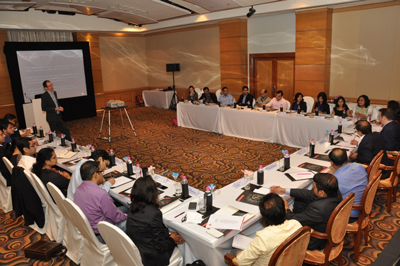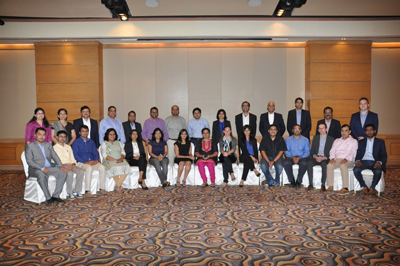This post is by Matt Green, senior marketing communications manager at the WFA.
The first meeting of the WFA's MEDIAFORUM in India is the perfect time to reflect on what we can learn from this fast growing market.
India is a country of big numbers. Media investment is estimated at $7.2bn a year and growth in the past seven years has been a staggering 101%. It has risen from being the world's 20th largest media market in 2007 to No. 14 today.
But despite these huge numbers, the most interesting one for me is the growth potential. With 1.2bn people, marketing spend per person is just $6 a year, one of the lowest levels in the world.
Our MEDIAFORUM was hosted by TATA in Mumbai and brought together 30 client-side media leads to focus on key paid-media issues within the Indian sub-continent and beyond.

Many of the participating companies were the household names, originating from Europe, the US and elsewhere, that are now also firmly embedded in India. But we were also joined by a number of companies that originated in India and are now rapidly becoming global enterprises in their own right.
This potent mix allowed us to reflect both on what India can teach the world but also where there are lessons to be transferred from other markets.
What is clear is that India is nothing if not a nation of highly practical and innovative people, and this extends to marketing in equal measure.
We need look no further than the local media audience measurement system for a demonstration of this practicality in action. It's true that TAM India has not been without its challenges, and measurement was identified as a priority for a number of attendees.
The measurement challenge in India is being addressed by the Broadcast Audience Research Council (BARC), a tripartite including the Indian Society of Advertisers (also a member of the WFA), tasked with restoring a reliable and trade-able TV measurement system.
BARC has massively expanded the scope of TV measurement in India, which now tracks 33,500 respondents across 164 cities and towns, the largest TV sample in the world. Clearly this is a complex feat of logistics.
Changing media consumption habits means that marketers increasingly require visibility into the combined effects of running campaigns across multiple channels simultaneously. Interestingly, this emerged as much a priority for Indian media leads as their global, European and North American counterparts, as highlighted by a recent MEDIAFORUM meeting in New York.
While no market or research company has found the silver bullet for this problem yet, the practicality, determination and will to cooperate evident in India will clearly help in the pursuit of a solution.
Digital represents a relatively low share of spend in India, but is growing rapidly, and inevitably formed a large part of the discussion in our MEDIAFORUM. The burgeoning programmatic space is now becoming well established in the US and the UK and other European markets. There are clear learnings to import to India with regard to the optimum 'trading desk' set-up, how best to ensure ownership and protection of data, and how to utilise programmatic technology to deliver competitive advantage.
But there are a number of lessons that can be taken from India and applied elsewhere, in regard to other media. Print is the second biggest medium in India, representing around 34% of spend, one of the highest proportions in the world. While it might be tempting to suggest that India will go the same way as other Western media markets, interestingly, print appears to be thriving here.
Publishers tend to have in-house creative and innovation teams adept at developing highly tailored and solution-led ideas. In the case of Unilever, this meant physically adding the aroma of coffee to the paper, while Volkswagen pioneered a talking newspaper to provide information about their models.
Digital is growing rapidly in this market but a will to engage with marketers plus the flexibility to adapt and innovate, has ensured the print industry has a place in the future.
The unique and innovative Indian approach to marketing is further demonstrated by the creation of the 'missed call' economy – whereby brands ask consumers and businesses to make a call that captures their number and triggers a response.
What began as a means of prompting another party to call them back (receiving calls is free in India) has now developed into a culture being incorporated into all parts of life, it's even being incorporated into mobile applications and services as a standard type of messaging.
It's unclear if the 'missed call' culture will take-off elsewhere but we do know that brand purpose is a massive global marketing trend, and this is an area that our hosts had much to teach. Company founder Jamsetji Tata bought an oil mill in 1839 and converted it into a cotton mill, the first transaction in a long and successful business career that led to the creation of the TATA Group in 1868.
Rather than seeking purely to profit from his business transactions, Jamsetji believed that business had an obligation to give back to society. 'Society' remains one of the four stakeholders that the organisation serves and 'purpose' is hardwired into the DNA of the business.
While 'purpose' has become a big focus for many global businesses in recent years, it's fascinating to see that the Indians have been doing this with aplomb and conviction for the past 150 years.
All in all it was a highly successful MEDIAFORUM and one that highlights the fact that everyone can learn from this unique and innovative nation.


